Most Beautiful Cars: Jaguar E-Type
Posted on Oct 24, 2020 in Antique | 2 comments
The most beautiful car ever made – Enzo Ferrari

There you have it, from the man whose company has created more incredibly beautiful car designs than anyone on the planet. The Jaguar E-Type (XKE in the US) is probably THE most beautiful design ever for a production car. It is a car so striking that it was included as a permanent part of the collection at New York’s Museum of Modern Art. Almost without exception, every list of great and beautiful cars includes an E-Type. More text and photographs have been devoted to this car than any other in history.

Dubbed “The Greatest Crumpet Catcher Known to Man” by Henry Manney, the E-Type remains an icon of the swinging sixties, the British invasion, and the domination Britain had over the sports car market. Styled by Malcolm Sayer, a newcomer to the Jaguar team and a self-proclaimed aerodynamicist, in partner with Sir William Lyons, the chief at Jaguar, it was the first design not created by Sir William himself. Lyons was known to style the cars in the garden of his home, spending hours watching the how the light reflected off the curves, all while local children watched from atop the garden walls. The E-type was the perfect blend of Sayers understanding of aerodynamics and Lyons’ mastery of light and shape.
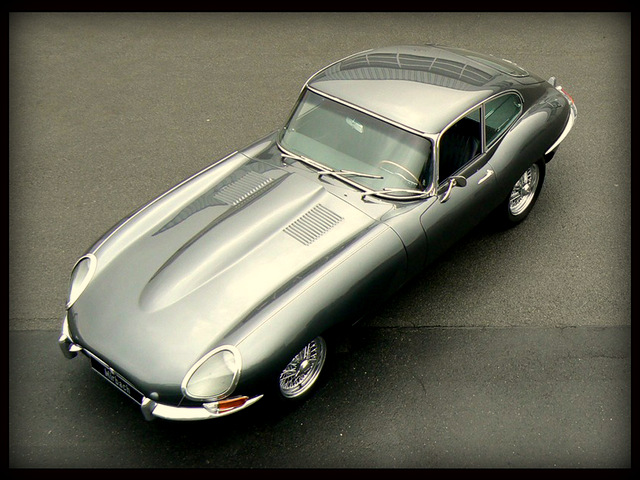
When the E-Type was introduced at the 1961 Geneva Auto Show, it was an instant hit, and well on its way as an icon of a generation. It was the choice of celebrities, royalty, and the ultra rich, who combined style and class with a penchant for caddish behavior. The super chic of the time, Brigitte Bardot, Steve McQueen, Mick and Bianca, and George Best all chose the E-Type, and even Frank Sinatra barked “I want that car, and I want it now” the moment he saw it.

When it was introduced at the Geneva Auto Show in 1961, Jaguar took 500 orders. It looked like nothing else on the display floor, and at £2097 for the roadster and £2196 for the fixed head coupe, the car was considerably cheaper than its competitors Ferrari, Aston Martin and Porsche. In fact, it was priced lower than the car it replaced, the XK150.

The E-Type was beautiful and exciting, but was far from perfect. The claimed 150mph top speed was basically a myth until 1963, the car drank enough oil to fill a supertanker and the ungodly Moss gearbox lacked synchromesh on the first gear, and originally intended for use in pre-war trucks. Add to that the lack of space, the poor braking, the wicked Lucas electrics dubbed “The Prince of Darkness” and you end up with something like a first wife…pretty, but impossible to live with. One of the few good items on the car was the independent rear suspension which was designed by Bob Knight in only 27 days on a bet with founder Sir William Lyons, which endured until the 1990’s. Even the engine had faults, being a carryover from 1949 and a testament to Sir William’s frugality.
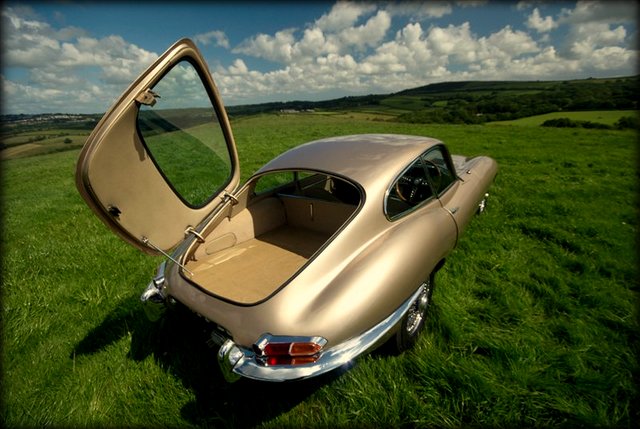
The original Series I was the purest of the line. It was surprisingly rare, with only 2160 cars produced in 1961, another 6266 in 1962, and 4065 in 1963. Over the years the car evolved to have a more powerful engine, better seating, and better electrics. In 1966 the introduction of the 2+2 radically changed the E-Type body. While the roadster stayed the same, the FHC featured a longer wheelbase by 9 inches, longer doors and a taller windscreen, designed to accommodate two children in the additional rear seats. It was offered with an automatic gearbox for the first time and sold surprisingly well, though it was criticized by many for its odd proportions.

In 1967 the E-Type was reworked, this time to comply with the growing US regulations for cars. The new Series 1 ½ meant the headlamps were moved forward 2.5 inches, and the Perspex headlamp cover were gone. Minor changes continued though the Series II and up into the 1970’s. Jaguar had intended on replacing the E-Type with the XJ27, or as we know it, the XJ-S. However, due to financial difficulties, it was decided to rework the E-Type, extending its life with the addition of a new V12 engine. This new E-Type, dubbed the XJ25 was finally launched as the Series III.
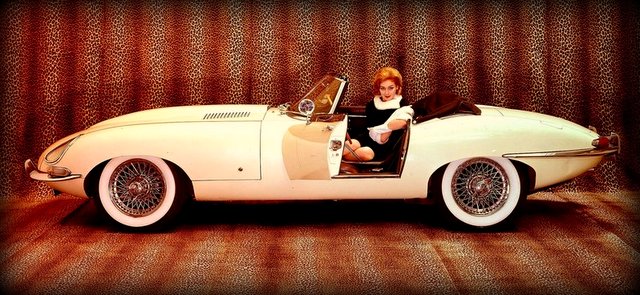
The new Series III featured a wider stance with 1 inch flared wheel arches, a larger air intake and chrome XJ6 grille, better brakes and steering and a commitment to the 2+2 wheelbase length. The 2-seater Jaguar Coupe was dead.
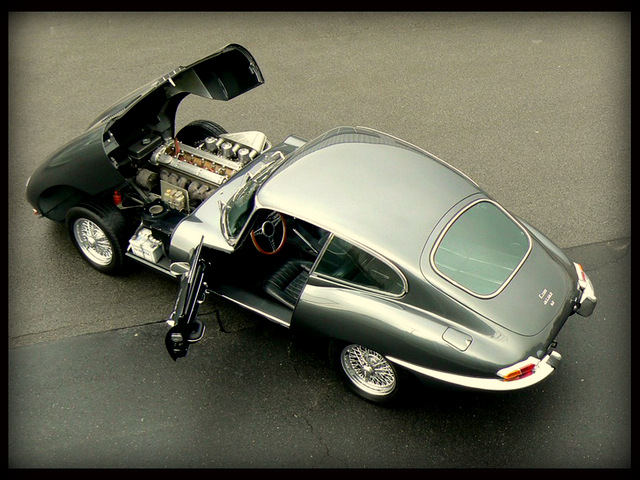
By 1972 the end was near for the beloved E-Type. By this time Malcolm Sayer had suffered a fatal heart attack, and Sir William Lyons finally retired. Strikes and US mandates on safety had turned the car into an aging icon, a once beautiful actress who had finally lost her looks. By 1974, production had basically ceased, but unsold Jaguars in dealerships prevented Jaguar from announcing the official end of the line until February 1975. It was replaced by the XJ-S, the final car to be designed by Malcolm Sayer in cooperation with Sir William. The end of an era had come to Jaguar.
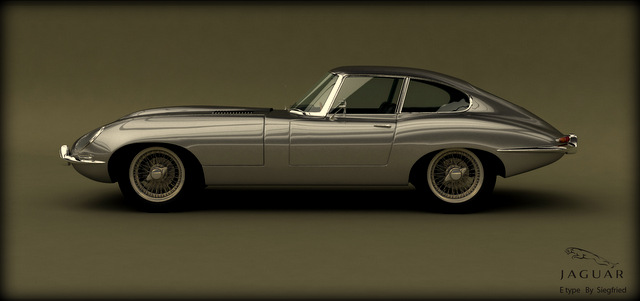
The Jaguar E-Type, in all her forms was a breakthrough in automotive design. It possessed a shape that was instantly recognizable, even among non-car people. Its curvaceous body was unlike any production car before or since, and remains an icon of an era. Coveted as a work of art, the E-Type is a true symbol of what put the “Great” into Great Britain.
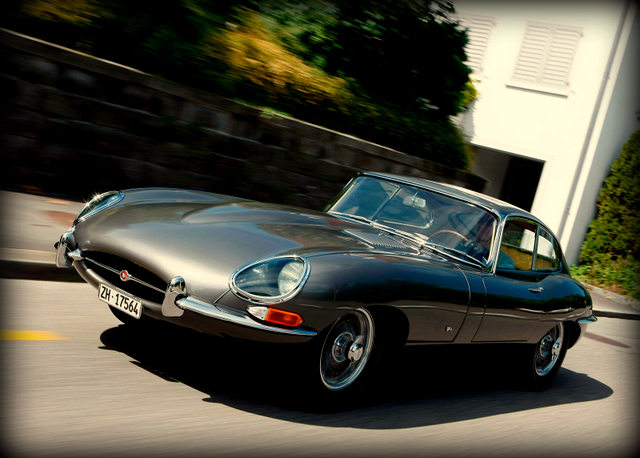
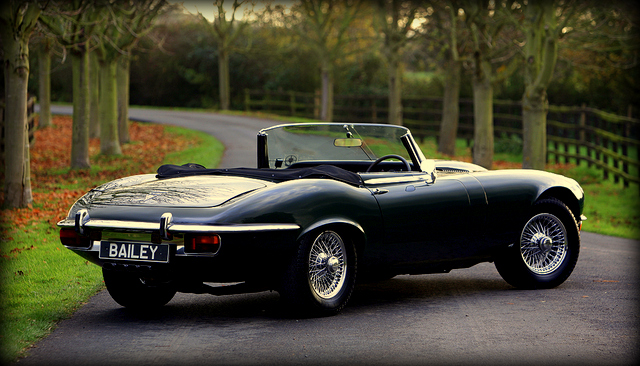





We absolutely love your blog and find a lot of your post’s to be what precisely I’m looking for.
Do you offer guest writers to write content available for you?
I wouldn’t mind composing a post or elaborating on a lot of the
subjects you write about here. Again, awesome website!
Thanks for the kind words. Presently we do not offer guest content on the site, but I will keep your information on file should that change.